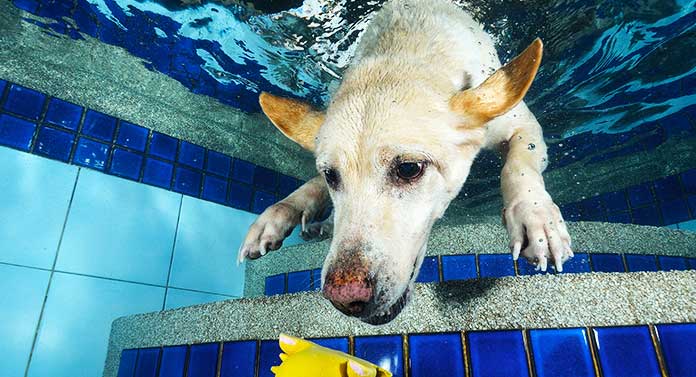
Labs also can use their webbed feet to get traction and power in snow, especially when running or jumping. Similar to having dew claws, which can provide traction on sand or in certain types of terrain, having webbing can help a dog on slippery or rocky surfaces where they need to extend their paws to regain stability. (Is your Labrador having paw issues? Read here for why Labs often have issues with paw chewing, biting, and itching) Labs often encounter muddy conditions, thick brush, rocky surfaces, and uneven terrain when retrieving or hunting, and having additional traction and stability can help the dog remain on its feet and avoid obstacles. The webbing in their paws can provide additional stability and traction, especially on muddy or slippery surfaces. Labradors’ webbed feet also give them an advantage on land.

Why Webbed Feet Helps Labs on Land & Snow By taking the right steps to teach them, your Lab’s instincts should kick in and they will likely develop a natural love of being in the water. If you have a new puppy, make sure you teach them to swim slowly and gradually, without causing a fear of the water. Labradors are known for being excellent swimmers, though they might need to be guided and introduced to the water carefully when you first try to teach them to swim. Those Labrador nails (and dew claws, if your Lab has them) can be fully extended in the water, and can unintentionally scratch you! If you happen to be in the water with your Lab when they’re swimming, be careful that you don’t get scratched! We’ve been scratched many times accidentally by exuberant Labs swimming with their paws extended wide and webbing exposed. The webbing serves as additional surface area for water displacement. This is a more efficient use of their paws than keeping them contracted. If you are able to see underwater when a Lab is swimming, and observe what they do with their paws, you’ll see that they “open up” their paws as wide as they can to expose the webbing in between each nail, and take up as much room as they can with their paws in the water.īy doing this, they are pushing and moving higher amounts of water with every stroke. their open hand to push through the water.Ī paddle, or webbing, gives a more effective stroke through the water and allows more water to be moved out of the way, rather than water sliding between the fingers (or paw, in this case). It’s similar to the idea of a human using swim paddles vs. Webbed feet act as “paddles” in the water to help displace more water when a Labrador is swimming. The webbed feet of the Labrador Retriever give it a huge advantage in the water, both in swimming and water retrieving. Lab breeders in both the United States and Great Britain have been able to breed to improve standards and traits they prefer in the dogs they produce and continue to breed dogs that demonstrate exceptional performance as both a family dog and retriever. Throughout the last several hundred years, Labs have become extremely popular not only due to their physical abilities but to their playful, friendly personalities and strong bond to humans.

If you separate a Lab’s toenails gently on their paw, you’ll see webbing in between them that attaches and connects them together underneath their fur. Webbed feet were seen as a distinct advantage over other dogs who did not possess this trait, and those early Labs with webbed feet were likely selected for future breeding due to this feature giving them a tremendous performance advantage. They developed a reputation for excellent performance as retrievers especially in the water, and comfortable even at colder temperatures in northern Canada. Labrador Retrievers have been bred for centuries, originating in the Newfoundland area of northeastern Canada several hundred years ago. Let’s go over the advantage that webbed feet give the Labrador Retriever, and how it helps them excel on both land and in the water.

How does this work to their advantage in performing typical Lab activities? What benefit does this give Labradors over other types of dogs with smaller paws or lack of webbing?

As an Amazon Associate I earn from qualifying purchases. (This article may contain affiliate links.


 0 kommentar(er)
0 kommentar(er)
